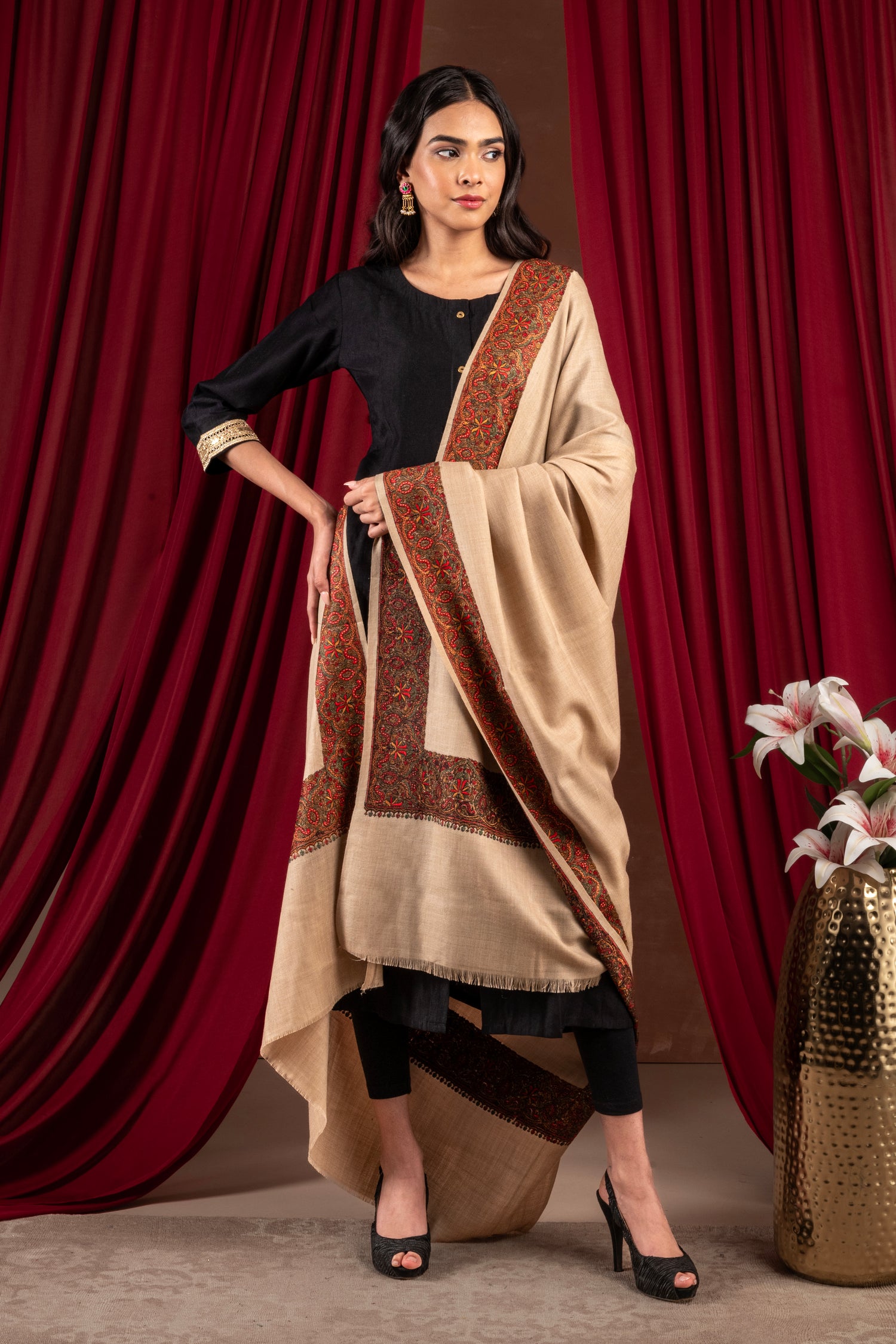For centuries, shawls have been more than just a piece of fabric; they have been emblems of culture, status, and craftsmanship. From their humble origins as protective winter garments to their rise as luxurious fashion statements, shawls have stood the test of time, evolving in both function and meaning across civilizations.
Ancient Beginnings: Protection from the Harsh Conditions
The earliest records of shawls date back to ancient civilizations where they were primarily used for warmth and protection. In Mesopotamia, woollen wraps were common among both men and women, serving as a defence against harsh weather. Similarly, in Persia, finely woven woollen shawls were worn by nobility and artisans alike. These shawls were often hand-spun, making them a symbol of skill and utility.
The Indian Legacy: The Rise of Kashmiri Shawls
One of the most iconic shawls in history hails from Kashmir, India. The Kashmiri shawl, also known as the Pashmina, originated from the soft undercoat of the Changthangi goat found in the Himalayas. These shawls gained prominence in the 15th century under the patronage of Mughal emperors like Akbar, who not only wore them but also gifted them as symbols of prestige. The exquisite Kani shawls, woven with intricate floral motifs, became a hallmark of luxury, worn by aristocrats and royalty.
Did you know? The term "Pashmina" comes from the Persian word "Pashm," meaning soft wool. The intricate weaving of these shawls can take anywhere from several months to years to complete!
European Influence: The Shawl as a Fashion Statement
By the 18th and 19th centuries, shawls had made their way to Europe, largely due to the colonial trade routes. French and British elite women were enamoured by Kashmiri shawls, and soon, these pieces became a staple in aristocratic wardrobes. Napoleon Bonaparte famously gifted Kashmiri shawls to his wife, Josephine, further elevating their status in European fashion.
Did you know? Josephine Bonaparte was such a fan of Kashmiri shawls that she reportedly owned over 400 pieces, influencing an entire generation of European women to embrace these luxurious garments.
During the Industrial Revolution, European manufacturers attempted to replicate Kashmiri designs using wool and jacquard looms, giving birth to Paisley shawls in Scotland. The distinctive paisley pattern, inspired by Indian motifs, became synonymous with elegance and sophistication.
Did you know? The famous Paisley pattern gets its name from the Scottish town of Paisley, which became a major hub for shawl production in the 19th century.
Modern-Day Shawls: A Fusion of Tradition and Trend
Today, shawls are no longer confined to the elite; they are a universal wardrobe essential. Designers across the world incorporate traditional weaving techniques into contemporary fashion, making shawls a perfect blend of heritage and modern aesthetics. From handwoven silk stoles to embroidered woollen wraps, shawls continue to be symbols of craftsmanship and artistic expression.
What began as a necessity for warmth has transformed into an emblem of cultural pride and luxurious fashion. Whether passed down as heirlooms or styled for elegance, shawls remain timeless, connecting generations through fabric and tradition.

